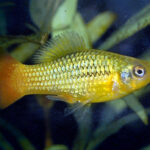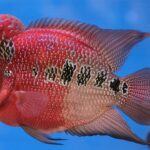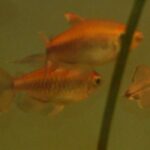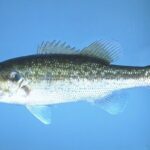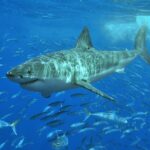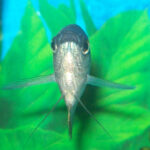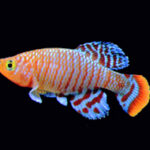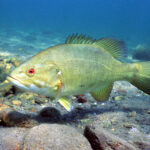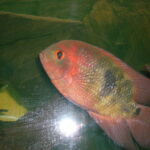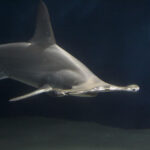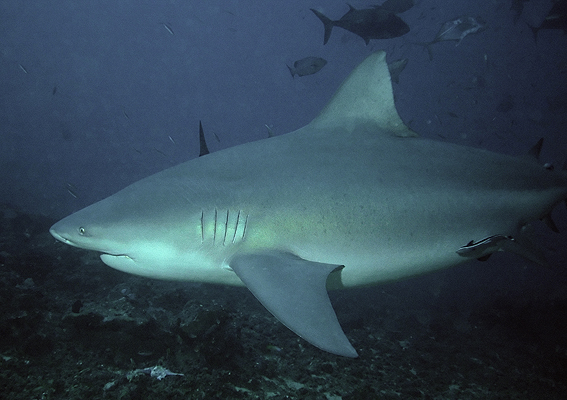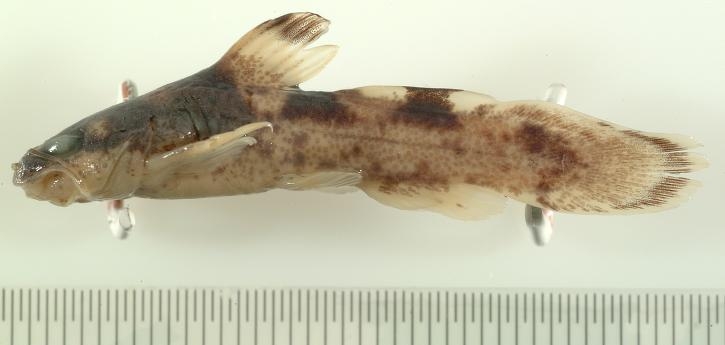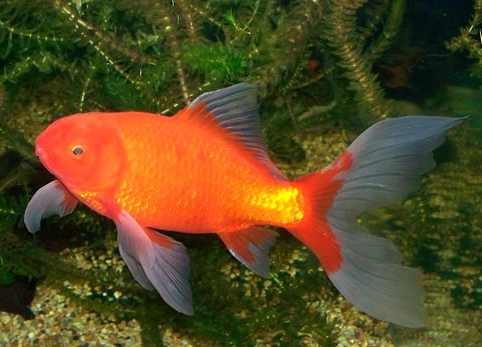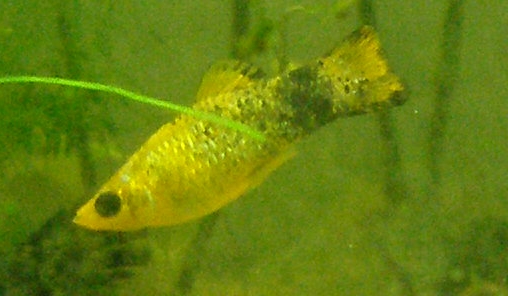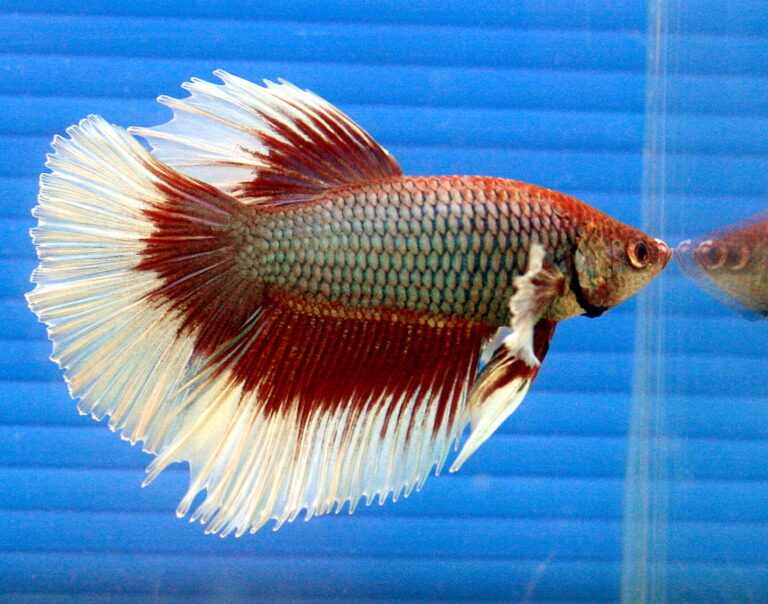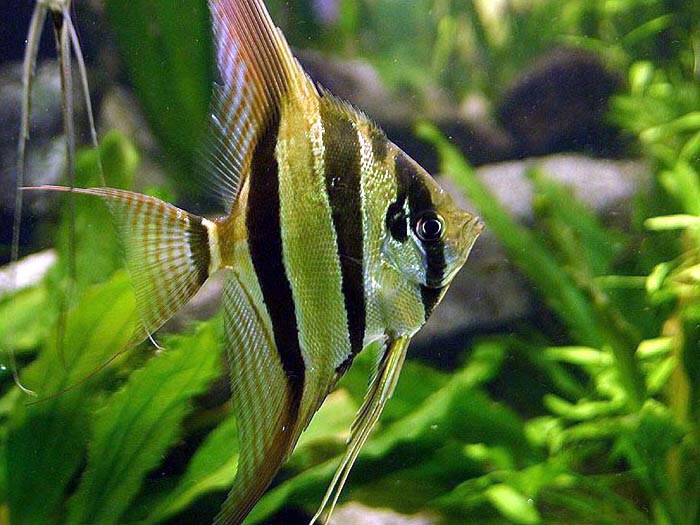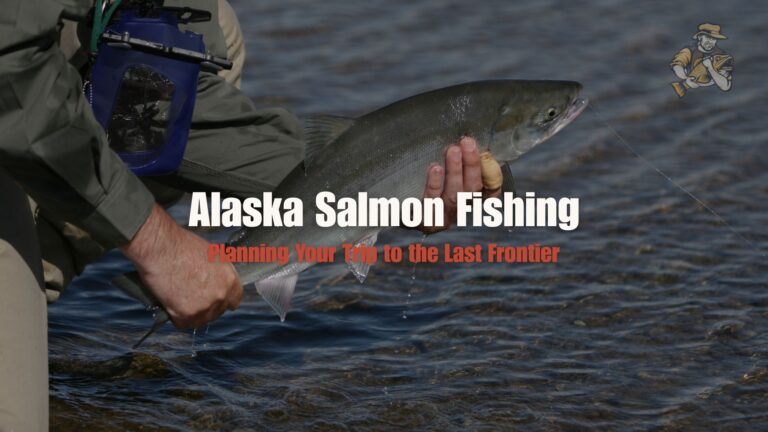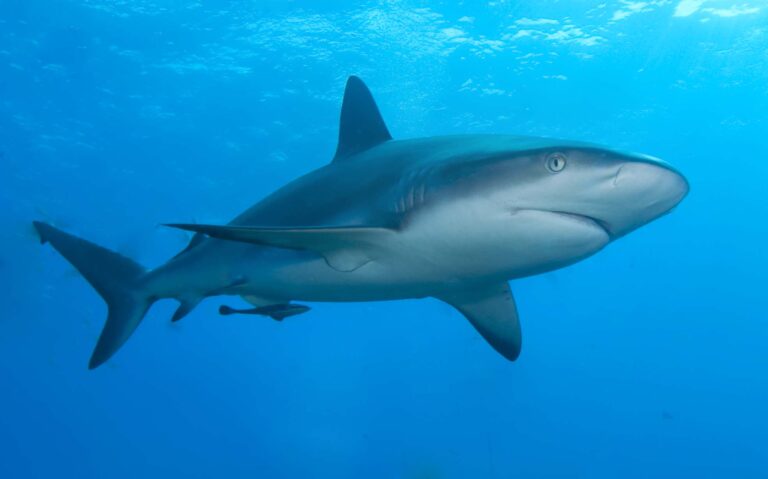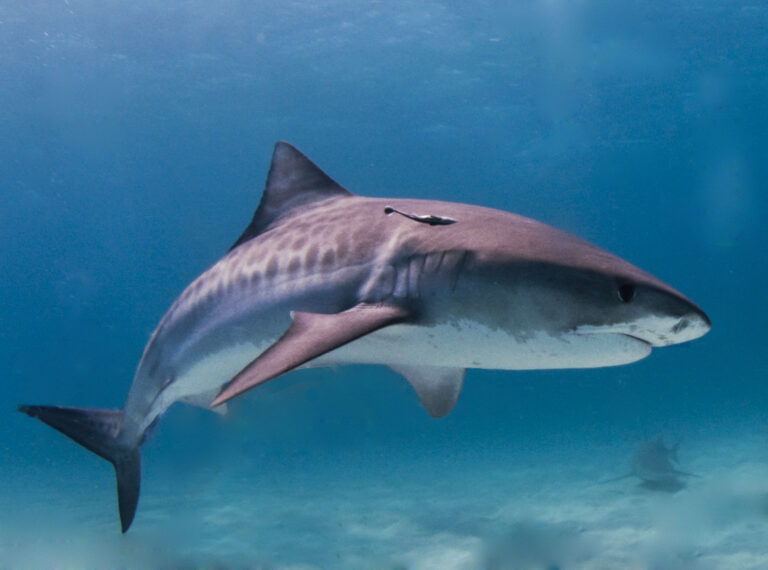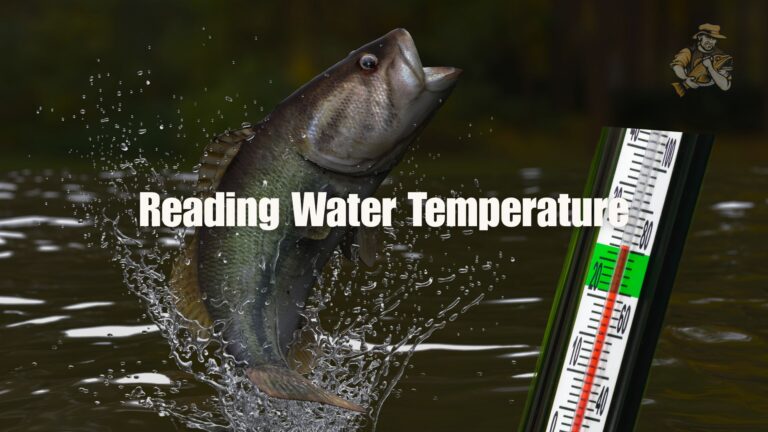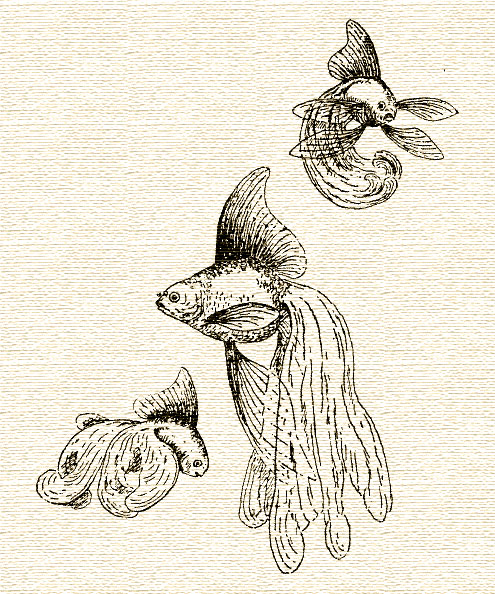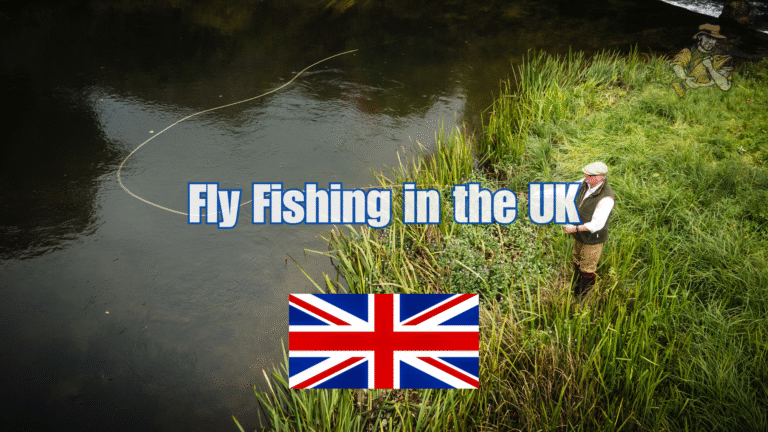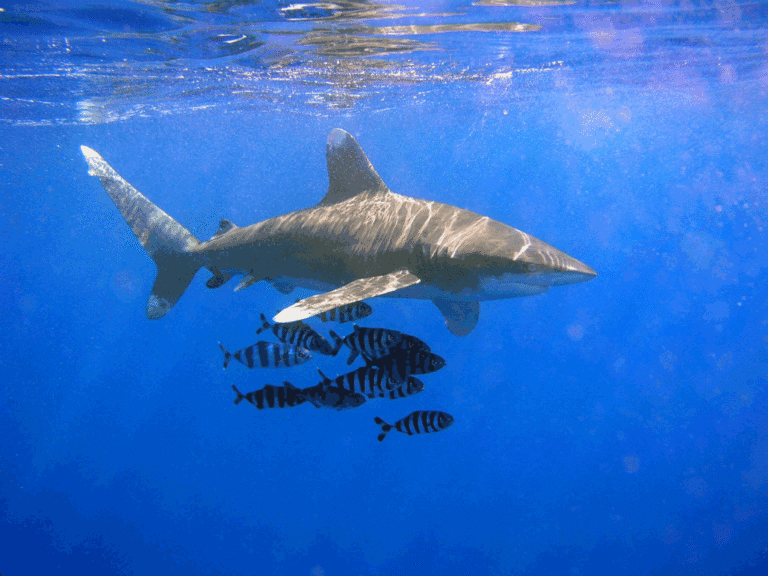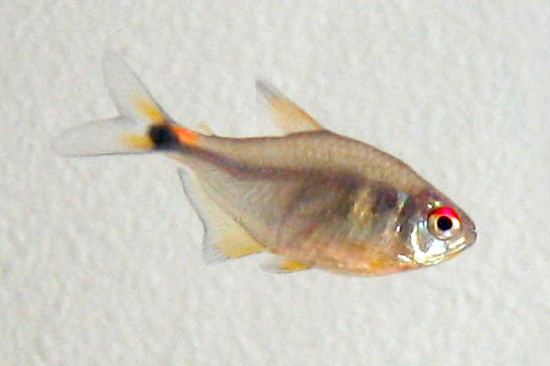Pearlscale Goldfish
By Ryan Maron | Last Modified: July 3, 2025
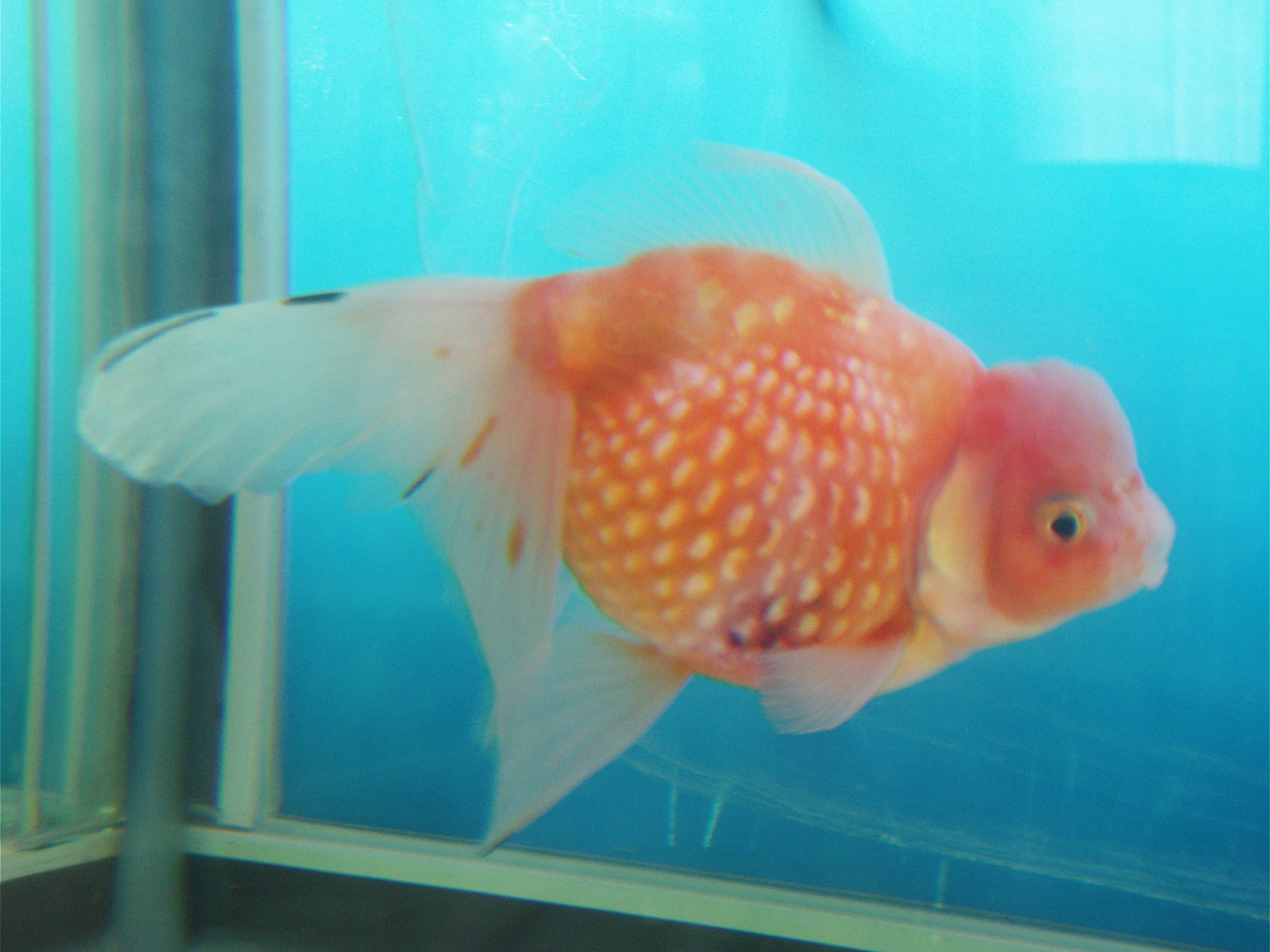
The Pearlscale Goldfish represents one of the most distinctive and captivating varieties of ornamental carp, distinguished by its characteristic raised scales that create a unique three-dimensional appearance resembling tiny pearls across its body. Known scientifically as *Carassius auratus*, this selectively bred variety has captured the attention of aquarium enthusiasts worldwide through its remarkable phenotypic expression and robust nature. The Pearlscale Goldfish plays a significant role in the ornamental fish trade, contributing substantially to both commercial aquaculture operations and hobbyist breeding programs. Within aquatic ecosystems, these fish serve as peaceful community members that contribute to biological diversity in controlled environments while maintaining the hardy characteristics that have made goldfish one of the most successful domesticated fish species in history.
| Feature | Details |
|---|---|
| Common Name | Pearlscale Goldfish |
| Scientific Name | Carassius auratus |
| Family | Cyprinidae |
| Typical Size | 15-20 cm (6-8 inches), 150-300 grams |
| Habitat | Freshwater aquariums and ponds |
| Diet | Omnivorous |
| Distribution | Captive-bred worldwide |
| Conservation Status | Not Evaluated (Domestic Variety) |
Taxonomy & Classification
The Pearlscale Goldfish belongs to the taxonomic classification system that places it within the Kingdom Animalia, Phylum Chordata, Class Actinopterygii, Order Cypriniformes, and Family Cyprinidae. As a selectively bred variety of *Carassius auratus*, the Pearlscale Goldfish shares its fundamental genetic foundation with all goldfish varieties, having been developed through centuries of careful breeding practices that emphasized specific phenotypic traits.
The species *Carassius auratus* was first scientifically described by Carl Linnaeus in 1758, establishing the taxonomic foundation for what would become one of the most diverse groups of ornamental fish varieties. The Pearlscale variety emerged during the Song Dynasty in China, approximately 1000 years ago, through selective breeding programs that focused on developing the distinctive raised scale formation that defines this variety.
Within the cyprinid family, the Pearlscale Goldfish represents a remarkable example of phenotypic plasticity, demonstrating how selective breeding can amplify naturally occurring genetic variations. The raised scale characteristic results from specific genetic mutations that affect scale development, creating the three-dimensional appearance that distinguishes this variety from standard goldfish types. Modern taxonomic classification recognizes the Pearlscale as a morphological variant rather than a distinct subspecies, maintaining its classification under the broad *Carassius auratus* designation while acknowledging its unique phenotypic characteristics.
Physical Description
The Pearlscale Goldfish exhibits a distinctive physical appearance characterized by its raised, dome-shaped scales that create a textured surface resembling pearls or small beads across the entire body. These specialized scales, known as pearl scales, form through a genetic mutation that causes calcium carbonate deposits to accumulate beneath each scale, creating the characteristic three-dimensional appearance. The scales typically measure 2-3 millimeters in height and maintain a consistent pattern across the fish’s body, with slight variations in size and prominence based on individual genetic expression.
The body structure of the Pearlscale Goldfish follows a compact, rounded profile with a deep, laterally compressed form that enhances the visual impact of the raised scales. Adult specimens typically reach lengths of 15-20 centimeters, with exceptional individuals occasionally exceeding 25 centimeters under optimal conditions. The weight range generally falls between 150-300 grams, though larger specimens in spacious pond environments may achieve greater mass.
Coloration in Pearlscale Goldfish encompasses the full spectrum of goldfish color varieties, including orange, red, white, black, blue, chocolate, and various combinations. The raised scales create unique light-reflecting properties that intensify color saturation and create iridescent effects under proper lighting conditions. The fins maintain proportional development relative to body size, with the dorsal fin typically displaying a moderate height and the caudal fin showing either single or double configurations depending on breeding lineage.
The head structure features a rounded profile with moderately sized eyes that may show slight telescoping in some breeding lines. The mouth remains small and positioned terminally, maintaining the typical goldfish feeding apparatus. Gill covers display smooth surfaces that complement the overall body contours, while the lateral line system remains clearly visible despite the scale modifications.
Habitat & Distribution
The Pearlscale Goldfish exists exclusively within controlled aquatic environments, having been developed and maintained through artificial selection rather than natural evolution. These fish thrive in freshwater systems with temperatures ranging from 18-24°C (65-75°F), though they demonstrate remarkable adaptability to temperature fluctuations between 10-30°C when properly acclimated. Water pH requirements span from 6.5-8.0, with optimal conditions maintaining neutral to slightly alkaline parameters.
In aquarium settings, Pearlscale Goldfish require minimum tank volumes of 150-200 liters per adult specimen to accommodate their moderate size and waste production. The substrate composition should consist of fine gravel or sand to prevent damage to the delicate raised scales during foraging behavior. Aquatic vegetation provides both aesthetic enhancement and functional benefits, including oxygen production and waste nutrient absorption.
Pond environments offer ideal conditions for Pearlscale Goldfish, allowing for natural swimming patterns and seasonal temperature variations that promote healthy physiological cycles. Pond depth should maintain a minimum of 120 centimeters to provide thermal stratification and protection from extreme temperature fluctuations. Surface area calculations recommend 2-3 square meters per adult fish to ensure adequate swimming space and territorial distribution.
Water quality parameters require consistent monitoring, with ammonia and nitrite levels maintained at zero through adequate biological filtration. Nitrate concentrations should remain below 40 parts per million through regular water changes and biological processing. Dissolved oxygen levels must stay above 6 parts per million, particularly during warm weather periods when oxygen solubility decreases.
The global distribution of Pearlscale Goldfish reflects the international ornamental fish trade, with breeding facilities operating across Asia, Europe, North America, and Australia. Commercial production centers concentrate in China, Japan, Thailand, and several European countries where climate conditions favor year-round outdoor breeding operations.
Diet & Feeding Behavior
The Pearlscale Goldfish exhibits omnivorous feeding behavior characteristic of the cyprinid family, consuming both plant and animal matter through opportunistic foraging strategies. Natural feeding patterns involve continuous grazing throughout daylight hours, with peak activity occurring during early morning and late afternoon periods when water temperatures moderate from daily extremes.
Primary dietary components include aquatic vegetation, algae, small invertebrates, zooplankton, and organic detritus. In controlled environments, commercial goldfish pellets provide balanced nutrition formulated specifically for cyprinid dietary requirements. High-quality prepared foods contain 30-35% protein content during growth phases, reducing to 25-30% for adult maintenance feeding. Carbohydrate content should constitute 35-40% of the diet, while lipid levels remain controlled at 5-8% to prevent digestive complications.
Feeding frequency requires careful management due to the Pearlscale Goldfish’s continuous appetite and efficient digestion. Adult specimens benefit from 2-3 small meals daily rather than single large feedings, preventing overloading of the digestive system and maintaining optimal water quality. Juvenile fish require more frequent feeding schedules of 3-4 times daily to support rapid growth rates and scale development.
Supplemental feeding options include blanched vegetables such as peas, spinach, and lettuce, which provide essential fiber and vitamins. Live or frozen foods including bloodworms, brine shrimp, and daphnia offer protein variety and behavioral enrichment. Feeding portions should be consumed within 2-3 minutes to prevent uneaten food decomposition and subsequent water quality degradation.
The unique scale structure of Pearlscale Goldfish does not significantly impact feeding behavior, though care must be taken to provide appropriately sized food particles that prevent choking or digestive blockage. Pellet size should match the fish’s mouth opening, typically 2-3 millimeters for adult specimens.
Behavior & Adaptations
Pearlscale Goldfish demonstrate peaceful, social behavior patterns that make them excellent community fish in appropriate settings. These fish exhibit schooling tendencies when maintained in groups, displaying synchronized swimming patterns and reduced stress indicators compared to solitary individuals. Social hierarchies develop within groups based on size and feeding dominance, though aggressive interactions remain minimal and rarely result in physical damage.
Swimming behavior reflects the influence of their modified body structure and scale formation. The compact body shape and raised scales create slightly increased drag compared to streamlined goldfish varieties, resulting in more deliberate swimming movements and reduced burst speed capabilities. This adaptation actually benefits the fish in aquarium environments by preventing injury from rapid directional changes near tank walls or decorations.
Territorial behavior remains largely absent in Pearlscale Goldfish, with individuals showing tolerance for close proximity during feeding and resting periods. However, breeding season may trigger mild territorial displays as males establish and defend spawning areas. These behaviors include gentle nudging and position blocking rather than aggressive attacks.
Environmental adaptations include remarkable temperature tolerance, allowing survival in water temperatures ranging from near-freezing to 30°C. This adaptability stems from physiological mechanisms including metabolic rate adjustment and altered membrane composition in extreme temperatures. Seasonal behavioral changes occur in outdoor environments, with reduced activity and feeding during winter months when temperatures drop below 10°C.
The raised scale structure provides unique sensory adaptations, potentially enhancing water movement detection through increased surface area interaction with water currents. This adaptation may improve feeding efficiency by helping locate food particles through hydrodynamic disturbances. Additionally, the pearl scales create visual communication signals through light reflection patterns that may facilitate social recognition and group cohesion.
Stress response behaviors include reduced appetite, decreased activity levels, and potential scale darkening. Environmental stressors such as poor water quality, overcrowding, or temperature fluctuations trigger these responses, emphasizing the importance of stable aquatic conditions for optimal health and behavior expression.
Reproduction & Life Cycle
The reproductive cycle of Pearlscale Goldfish follows seasonal patterns triggered by temperature changes and photoperiod variations, typically occurring during spring and early summer months when water temperatures reach 18-20°C. Sexual maturity occurs at 1-2 years of age, with females generally maturing slightly later than males due to the energy requirements of egg production.
Pre-spawning behavior includes increased activity levels, with males developing breeding tubercles on their gill covers and pectoral fins. These small, white bumps serve both as breeding indicators and tactile stimulation tools during courtship. Females show increased abdominal fullness as eggs develop, with mature females capable of producing 2,000-4,000 eggs per spawning event.
Spawning behavior involves males pursuing females through aquatic vegetation or artificial spawning media, with fertilization occurring externally as eggs are released and immediately fertilized by male sperm. The adhesive eggs attach to plant material or spawning mops, where they undergo development over 4-7 days depending on water temperature. Optimal spawning conditions require temperatures of 20-22°C with abundant oxygen and gentle water circulation.
Embryonic development progresses through standard teleost fish stages, with hatching occurring when larvae reach approximately 5-6 millimeters in length. Newly hatched fry possess yolk sacs that provide nutrition for the first 2-3 days before free-swimming behavior begins. Early larval stages show no indication of the characteristic pearl scale development, which emerges gradually over several months.
Juvenile development involves rapid growth during the first year, with pearl scale formation becoming apparent at 3-4 months of age. Scale development continues throughout the first year, reaching full expression by 12-18 months. Growth rates vary significantly based on water temperature, feeding frequency, and space availability, with optimal conditions producing 8-10 centimeter fish within the first year.
The genetic inheritance of pearl scale characteristics follows complex patterns involving multiple genes, with breeding programs requiring careful selection to maintain scale quality while avoiding associated health issues. Experienced breeders monitor scale development patterns and select breeding stock based on scale uniformity, body proportion, and overall health indicators.
Breeding Pearlscale Goldfish requires understanding of genetic complications that may arise from the scale mutation, including potential digestive issues and increased susceptibility to bacterial infections if scales become damaged. Responsible breeding practices emphasize health screening and genetic diversity maintenance to preserve the variety’s long-term viability.
Predators & Threats
In controlled aquatic environments, Pearlscale Goldfish face limited natural predation due to their protected status in aquariums and managed ponds. However, outdoor pond installations may expose these fish to various predators including herons, egrets, raccoons, cats, and large aquatic insects during vulnerable life stages. The distinctive pearl scales may actually increase predation risk by creating visual contrast and reducing swimming speed compared to streamlined fish varieties.
Avian predators pose the most significant threat to pond-kept Pearlscale Goldfish, with herons and egrets demonstrating remarkable patience and precision when hunting. These birds typically target smaller individuals or approach larger fish during dawn and dusk periods when visibility conditions favor their hunting strategies. Protective measures include pond netting, decoy predators, and adequate hiding places such as underwater caves or dense vegetation.
Mammalian predators including raccoons and domestic cats present additional challenges, particularly for fish in shallow water areas or during spawning periods when normal vigilance decreases. Raccoons possess exceptional dexterity for catching fish in confined spaces, while cats may opportunistically hunt fish that venture near pond edges.
Disease threats represent more significant concerns than predation for captive Pearlscale Goldfish populations. The raised scale structure creates potential entry points for bacterial infections, particularly when scales become damaged through handling or environmental abrasion. Common bacterial pathogens include *Aeromonas* and *Pseudomonas* species, which may cause scale rot and systemic infections if water quality deteriorates.
Parasitic threats include protozoan parasites such as *Ichthyophthirius multifiliis* (ich), *Chilodonella*, and *Trichodina* species. The textured scale surface may provide additional attachment sites for certain parasites, requiring vigilant monitoring and prompt treatment when symptoms appear. Fungal infections, particularly *Saprolegnia* species, may also colonize damaged or stressed scales.
Environmental threats encompass water quality degradation, temperature extremes, and oxygen depletion. Poor filtration or overcrowding leads to elevated ammonia and nitrite levels that stress the immune system and increase disease susceptibility. Sudden temperature changes may trigger shock responses, while prolonged exposure to suboptimal conditions weakens overall health and resistance to pathogens.
Human-related threats include improper handling during maintenance activities, inappropriate water chemistry adjustments, and inadequate quarantine procedures when introducing new fish. The delicate nature of pearl scales requires gentle handling techniques and gradual environmental changes to prevent physical damage and associated health complications.
Conservation Status
The Pearlscale Goldfish, as a domesticated variety of *Carassius auratus*, does not possess a formal conservation status designation from the International Union for Conservation of Nature (IUCN) or other conservation organizations. This absence of classification reflects the species’ origin through selective breeding rather than natural evolution, placing it outside traditional conservation frameworks designed for wild fish populations.
However, the genetic diversity and continued availability of quality Pearlscale Goldfish breeding stock represents an important consideration for the ornamental fish industry and hobbyist communities. Maintaining diverse breeding lines prevents inbreeding depression and preserves the genetic foundation necessary for continued variety development and health improvement.
Commercial breeding operations play a crucial role in preserving Pearlscale Goldfish genetic resources, with major facilities in Asia, Europe, and North America maintaining distinct breeding lines developed over decades or centuries. These operations serve as genetic repositories that ensure variety continuity and provide foundation stock for smaller breeding programs worldwide.
The broader *Carassius auratus* species shows stable population dynamics in its native range across East Asia, though habitat modification and pollution present ongoing challenges for wild populations. Conservation efforts for wild goldfish populations focus on habitat preservation and water quality maintenance in natural river and lake systems throughout China, Korea, and parts of Russia.
Hobbyist breeding programs contribute significantly to Pearlscale Goldfish conservation through distributed genetic preservation efforts. Specialized goldfish societies and breeding clubs maintain detailed records of breeding lines and promote responsible breeding practices that emphasize health, genetic diversity, and trait preservation.
Environmental considerations surrounding ornamental fish keeping include responsible aquarium and pond management practices that prevent accidental release into natural water systems. While Pearlscale Goldfish show reduced survival capabilities in wild environments due to their modified body structure, preventing introductions protects native ecosystems from potential genetic pollution and competitive pressures.
Education initiatives within the aquarium hobby promote understanding of proper Pearlscale Goldfish care requirements and breeding responsibilities. These programs emphasize the importance of maintaining healthy breeding stock and avoiding practices that may compromise the variety’s long-term genetic viability.
Human Interaction
The relationship between humans and Pearlscale Goldfish spans over a millennium, representing one of the longest continuous selective breeding programs in aquaculture history. Chinese aquarists developed the distinctive pearl scale characteristic during the Song Dynasty, establishing breeding techniques that continue to influence modern goldfish cultivation. This historical connection demonstrates the significant cultural impact of ornamental fish keeping in human societies.
Modern aquarium keeping has elevated the Pearlscale Goldfish to considerable popularity among enthusiasts who appreciate the variety’s unique aesthetic qualities and manageable care requirements. The global ornamental fish trade generates substantial economic activity through Pearlscale Goldfish sales, with annual market values reaching millions of dollars across international markets. Commercial breeding facilities employ hundreds of workers worldwide, contributing to local economies in rural areas where climate conditions favor outdoor production.
Educational applications of Pearlscale Goldfish include their use in genetics courses to demonstrate selective breeding principles and inheritance patterns. Universities and research institutions utilize these fish to study scale development, genetic expression, and aquaculture techniques. The visible nature of the pearl scale trait makes it an excellent teaching tool for understanding how selective pressure influences phenotypic expression over successive generations.
Therapeutic applications of Pearlscale Goldfish keeping include stress reduction and psychological benefits associated with aquarium maintenance. Healthcare facilities, nursing homes, and therapy centers frequently incorporate goldfish displays to provide calming environments and interactive experiences for patients and residents. The peaceful nature and attractive appearance of Pearlscale Goldfish make them particularly suitable for these applications.
Competition and exhibition events showcase exceptional Pearlscale Goldfish specimens, with judging standards emphasizing scale uniformity, body proportion, color intensity, and overall health. These events promote breeding excellence and provide venues for sharing knowledge about advanced husbandry techniques. International goldfish shows attract participants from multiple countries, fostering cultural exchange and technical collaboration.
Research applications extend beyond genetics to include studies of fish behavior, nutrition, disease resistance, and environmental adaptation. The long history of Pearlscale Goldfish cultivation provides researchers with extensive background data and established breeding lines for controlled experiments. Water quality research often utilizes goldfish as indicator species due to their sensitivity to environmental changes and well-understood physiological responses.
Responsible ownership practices emphasize proper aquarium sizing, water quality maintenance, and appropriate feeding regimens. Educational materials promote understanding of Pearlscale Goldfish care requirements and discourage impulse purchases that may result in inadequate care or abandonment. Animal welfare considerations include recognition of goldfish intelligence and social needs, leading to improved husbandry standards and housing recommendations.
Interesting Facts
The development of pearl scales in Pearlscale Goldfish results from a fascinating genetic mutation that affects calcium carbonate deposition patterns within individual scales. Each raised scale contains microscopic crystalline structures that create the characteristic three-dimensional appearance, with the formation process continuing throughout the fish’s lifetime as scales regenerate and grow.
Pearlscale Goldfish demonstrate remarkable longevity potential, with properly maintained specimens living 15-20 years or more in optimal conditions. The oldest recorded Pearlscale Goldfish reached 25 years of age, maintained in a temperature-controlled indoor aquarium with meticulous water quality management. This longevity exceeds many other ornamental fish species and reflects the robust genetic foundation inherited from their goldfish ancestry.
The pearl scale characteristic shows interesting variations based on water chemistry parameters, with harder water conditions generally producing more pronounced scale development. Calcium and magnesium concentrations directly influence scale formation, leading experienced breeders to adjust water hardness levels during juvenile development periods to optimize scale expression.
Color intensity in Pearlscale Goldfish can be influenced by environmental factors including lighting conditions, diet composition, and water temperature. The raised scales create unique light-refracting properties that intensify color saturation, with optimal viewing conditions producing almost metallic color appearances that shift based on viewing angle.
Temperature tolerance experiments have demonstrated Pearlscale Goldfish survival in water temperatures as low as 2°C and as high as 32°C, though these extremes require gradual acclimation and should not be maintained long-term. This remarkable adaptability stems from metabolic adjustments and cellular membrane modifications that allow function across wide temperature ranges.
The breeding of Pearlscale Goldfish requires understanding of complex genetic interactions, as the pearl scale trait sometimes associates with other characteristics including body shape modifications and fin development patterns. Successful breeding programs must balance scale quality with overall fish health and proportional development.
Some Pearlscale Goldfish develop additional characteristics including telescoping eyes or modified fin structures, creating sub-varieties within the broader Pearlscale classification. These variations result from independent genetic mutations that may be selectively bred to create distinct appearance combinations.
Modern genetic research has identified specific genes responsible for pearl scale development, opening possibilities for more precise breeding programs and better understanding of scale formation biology. This research contributes to broader scientific knowledge about calcium metabolism and structural protein expression in fish species.
Pearlscale Goldfish show enhanced social recognition abilities compared to many other fish species, with individuals demonstrating the ability to distinguish between familiar and unfamiliar tankmates. This cognitive ability may relate to the complex social environments maintained in traditional Chinese goldfish culture, where multiple varieties were often housed together in large outdoor pools.
Frequently Asked Questions
How large do Pearlscale Goldfish typically grow?
Pearlscale Goldfish typically reach adult sizes of 15-20 centimeters (6-8 inches) in length, with exceptional specimens occasionally growing larger in spacious pond environments. Growth rate depends significantly on water temperature, feeding frequency, space availability, and genetic factors. Young fish may grow rapidly during their first year, reaching 8-10 centimeters within 12 months under optimal conditions.
Do the pearl scales require special care or maintenance?
The raised pearl scales require gentle handling to prevent damage and potential bacterial infection entry points. Water quality must be maintained at optimal levels since damaged scales are more susceptible to fungal and bacterial colonization. Regular water changes, proper filtration, and avoiding sharp decorations help protect the delicate scale structure while maintaining fish health.
Can Pearlscale Goldfish be kept with other fish species?
Pearlscale Goldfish are peaceful community fish that coexist well with other goldfish varieties and similarly sized, non-aggressive species. Their slower swimming speed due to body shape modifications may put them at disadvantage during feeding competition with faster fish. Compatible tankmates include other fancy goldfish varieties, certain types of catfish, and peaceful temperate fish species.
What water temperature range is best for Pearlscale Goldfish?
Pearlscale Goldfish thrive in water temperatures between 18-24°C (65-75°F), though they can tolerate a broader range from 10-30°C when properly acclimated. Gradual temperature changes prevent shock, while consistent temperatures within the optimal range promote healthy scale development, proper digestion, and active behavior. Seasonal temperature variations in outdoor ponds are beneficial for natural biological cycles.
Conclusion
The Pearlscale Goldfish represents a remarkable achievement in selective breeding, combining distinctive aesthetic appeal with the hardy characteristics that have made goldfish successful companion animals for over a millennium. Their unique pearl scale formation and peaceful temperament continue to captivate aquarium enthusiasts while contributing to the diverse world of ornamental aquaculture. Through responsible breeding practices and proper husbandry, these living gems will continue to bring beauty and tranquility to aquatic environments for generations to come.
Share The Article:
More Fish Species:
-
Bull Shark
The Bull Shark represents one of the most formidable apex predators in marine ecosystems worldwide. Known scientifically as Carcharhinus…
-
Madtom Catfish
The Madtom Catfish represents one of North America’s most fascinating yet underappreciated groups of freshwater fish. These diminutive members…
-
Comet Goldfish
The Comet Goldfish (Carassius auratus) stands as one of the most recognizable and widely distributed freshwater fish species in…
-
Balloon Molly
The Balloon Molly (*Poecilia latipinna* var.) represents one of the most distinctive and popular ornamental fish varieties in the…
-
Half Moon Betta
The Half Moon Betta (Betta splendens) represents one of the most distinctive and sought-after varieties within the Siamese fighting…
-
Angelfish
Angelfish represent one of the most recognizable and ecologically significant families of marine fish, encompassing over 85 species distributed…
Discover
-
How to Fish for Salmon in 2025: Expert Tips and Techniques
Few fishing experiences match the thrill of feeling a salmon take your line. These powerful fish have captivated anglers…
-
Alaska Salmon Fishing: Planning Your Trip to the Last Frontier
I still remember the first time I hooked into a Kenai River king salmon. It was July 15, 2019,…
-
Caribbean Reef Shark
The Caribbean Reef Shark (*Carcharhinus perezi*) stands as one of the most recognizable and ecologically significant predators patrolling the…
-
Best Fishing Spots in California: Lakes, Rivers, and Coastal Hotspots
California fishing has always struck me as a study in beautiful contradictions. From snow-fed alpine lakes to sweltering desert…
-
Tiger Shark
The Tiger Shark (Galeocerdo cuvier) represents one of the ocean’s most formidable apex predators, earning its distinctive name from…
-
Reading Water Temperature: Seasonal Cues for Better Fishing
I’ve spent more mornings than I can count staring at a thermometer clipped to my fishing line, watching those…
Discover
-
How to Fish with Dry Flies: Beginner’s Guide to Surface Action
There’s something almost magical about watching a trout rise to sip your dry fly from the surface. I still…
-
Veiltail Goldfish
The Veiltail Goldfish stands as one of the most distinctive and graceful varieties within the goldfish family, renowned for…
-
Fly Fishing in the UK: Top Rivers and Seasonal Patterns
After nearly three decades casting flies across waters from Michigan to Maine – and now spending several weeks each…
-
Planning a Family Fishing Trip: Tips for a Hooked-on-Fun Adventure
There’s something almost magical about watching a kid’s face light up when they feel that first tug on their…
-
Oceanic Whitetip Shark
The Oceanic Whitetip Shark (*Carcharhinus longimanus*) stands as one of the ocean’s most formidable and recognizable apex predators, distinguished…
-
Head and Tail Light Tetra
The Head and Tail Light Tetra (*Hemigrammus ocellifer*) stands as one of South America’s most distinctive characin species, instantly…

